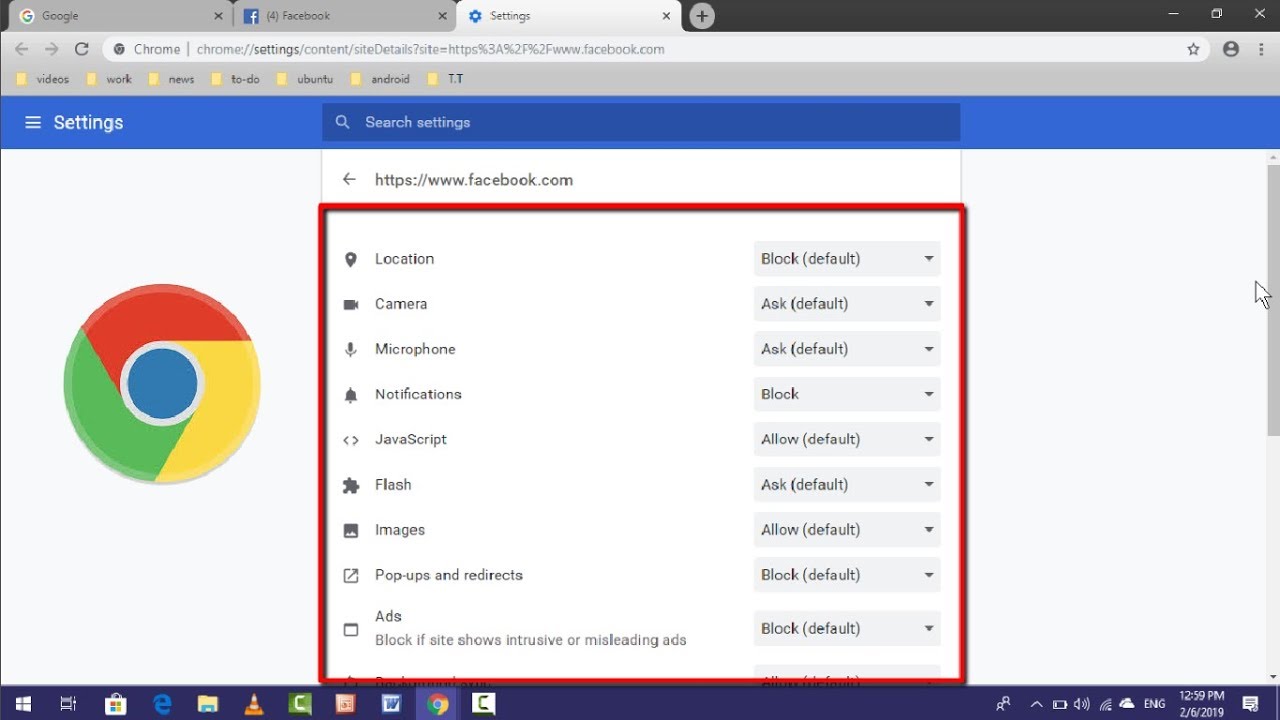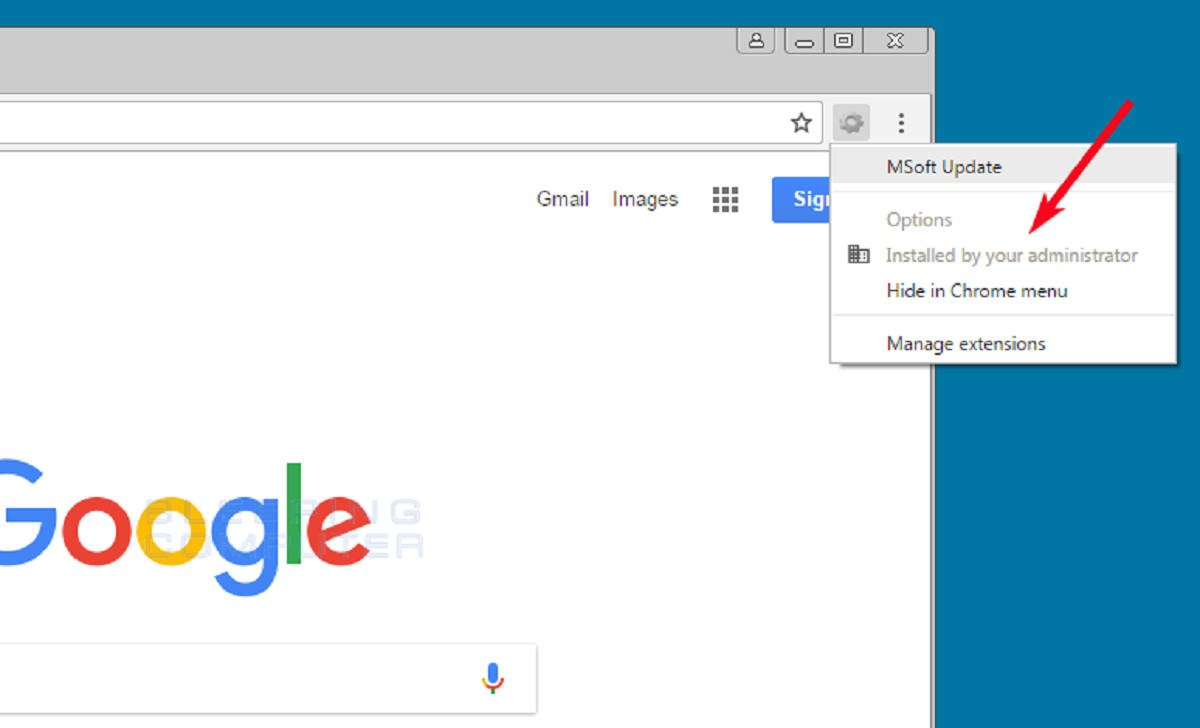Introduction
When it comes to browsing the internet, ensuring the security of your online activities is paramount. With the ever-increasing prevalence of cyber threats, understanding and managing browser security settings has become a crucial aspect of safeguarding your digital presence. As you navigate the vast landscape of the internet, you encounter a myriad of websites, each with its own set of security features and potential risks. This prompts the need to make informed decisions about which browser security settings to allow and which ones to block.
In this comprehensive guide, we will delve into the intricacies of browser security settings, equipping you with the knowledge and insights to make informed choices. By understanding the factors that influence these decisions and familiarizing yourself with common browser security settings, you will be better prepared to navigate the digital realm securely. Additionally, we will explore best practices for managing browser security settings, empowering you to optimize your online security without compromising your browsing experience.
As we embark on this journey, it's essential to recognize the dynamic nature of online security. The internet is constantly evolving, and so are the threats that lurk within it. Therefore, staying informed and proactive in managing browser security settings is key to mitigating potential risks and protecting your sensitive information. Let's embark on this exploration of browser security settings, arming ourselves with the knowledge and tools to navigate the digital landscape with confidence and security.
Understanding Browser Security Settings
Browser security settings encompass a wide array of features and configurations designed to protect users from online threats and vulnerabilities. These settings serve as a virtual fortress, shielding users from malicious websites, unauthorized tracking, and potential security breaches. Understanding these settings is crucial for effectively managing the security of your online activities.
At its core, browser security settings are designed to regulate the behavior of web browsers, such as Google Chrome, Mozilla Firefox, Microsoft Edge, and Safari, in response to various online threats. These settings encompass a range of functionalities, including but not limited to, blocking pop-ups, managing cookies, controlling access to location and camera, and detecting phishing and malware.
One fundamental aspect of browser security settings is the ability to customize the level of security based on individual preferences and requirements. This customization empowers users to tailor their browsing experience to align with their specific security needs. For instance, users can choose to enable or disable features such as JavaScript, Flash, and automatic downloads based on their risk tolerance and security concerns.
Moreover, browser security settings often include privacy controls that allow users to manage their digital footprint. These controls enable users to restrict websites from accessing their location, camera, microphone, and other sensitive data, thereby enhancing their privacy and reducing the risk of unauthorized data collection.
Understanding the nuances of browser security settings also involves recognizing the role of encryption in securing online communications. Modern web browsers employ encryption protocols such as HTTPS to establish secure connections between users and websites, safeguarding sensitive information from interception and tampering.
In essence, comprehending browser security settings entails grasping the multifaceted layers of protection they offer. From shielding against malware and phishing attempts to preserving user privacy and securing online communications, these settings form the bedrock of a secure browsing experience. By delving into the intricacies of browser security settings, users can harness the full potential of these protective measures to fortify their online presence and minimize exposure to digital threats.
Factors to Consider When Deciding Which Browser Security Settings to Allow or Block
When navigating the labyrinth of browser security settings, several crucial factors come into play when determining which settings to allow and which ones to block. These factors serve as guiding principles, empowering users to make informed decisions that align with their security preferences and browsing habits.
-
Risk Tolerance: Understanding your risk tolerance is pivotal in determining which browser security settings to enable or disable. Users with a low tolerance for risk may opt to enable stringent security measures, such as blocking pop-ups, disabling automatic downloads, and activating strict privacy controls. Conversely, those with a higher risk tolerance may choose to allow certain functionalities, such as JavaScript and cookies, while remaining vigilant against potential threats.
-
Usability and Functionality: Balancing security with usability is essential for a seamless browsing experience. Users must evaluate the impact of security settings on the functionality of websites and web applications. While stringent security measures may offer robust protection, they can also hinder the functionality of certain websites, leading to a trade-off between security and usability.
-
Privacy Concerns: Privacy-conscious users must carefully consider browser security settings that govern data collection and tracking. Features such as blocking third-party cookies, restricting website access to location and camera, and enabling Do Not Track requests can bolster privacy protections while mitigating the risk of unauthorized data collection.
-
Reputation and Trustworthiness of Websites: Assessing the reputation and trustworthiness of websites is integral to making informed decisions about browser security settings. For instance, users may choose to enable stricter security measures when visiting unfamiliar or potentially risky websites, while allowing more lenient settings for well-established and reputable platforms.
-
Security Updates and Patches: Staying abreast of security updates and patches for web browsers is imperative in maintaining a secure browsing environment. Users should prioritize enabling automatic updates for their browsers to ensure that they benefit from the latest security enhancements and bug fixes, thereby fortifying their defense against emerging threats.
-
Educational Awareness: Cultivating a foundational understanding of common online threats, such as phishing attacks, malware distribution, and social engineering tactics, empowers users to make informed decisions about browser security settings. By staying informed about prevalent threats, users can proactively adjust their security settings to mitigate specific risks.
By considering these factors, users can navigate the intricate landscape of browser security settings with confidence, striking a harmonious balance between robust protection and a seamless browsing experience. This informed approach empowers users to tailor their security settings to align with their individual needs and preferences, fostering a secure and personalized online environment.
Common Browser Security Settings to Consider
-
Pop-up Blocker: A pop-up blocker is a fundamental security feature that prevents intrusive pop-up windows from disrupting the browsing experience. By enabling this setting, users can mitigate the risk of encountering malicious pop-ups that may contain deceptive content or phishing attempts.
-
Cookie Management: Browser cookies are used to store user data and preferences, but they can also be leveraged for tracking and targeted advertising. Managing cookie settings allows users to control the storage and access of cookies, thereby enhancing privacy and reducing the risk of unauthorized tracking.
-
JavaScript Control: JavaScript is a versatile scripting language used to enhance website functionality, but it can also be exploited for malicious purposes. Users can choose to enable, disable, or selectively allow JavaScript on specific websites, balancing enhanced security with optimal functionality.
-
Download Settings: Controlling automatic downloads and file execution is crucial for preventing the inadvertent installation of malware or potentially harmful files. By configuring download settings, users can exercise greater control over the files that are permitted to be downloaded and executed within the browser environment.
-
Privacy Controls: Browser privacy settings encompass a range of features, including the ability to block third-party cookies, restrict website access to location and camera, and enable Do Not Track requests. These settings empower users to safeguard their personal data and minimize exposure to invasive tracking practices.
-
Security Certificates and HTTPS Enforcement: Ensuring that web browsers enforce the use of HTTPS for secure connections and validate the authenticity of security certificates is vital for protecting sensitive information during online transactions and communications. By prioritizing secure connections, users can mitigate the risk of data interception and unauthorized access.
-
Phishing and Malware Protection: Browser security settings often include built-in mechanisms to detect and block phishing attempts and malware-infected websites. Enabling these protections fortifies users against deceptive websites and malicious content, reducing the likelihood of falling victim to online scams and malware distribution.
-
Automatic Updates: Keeping web browsers up to date with the latest security patches and enhancements is essential for maintaining a secure browsing environment. By enabling automatic updates, users ensure that their browsers are fortified against emerging threats and vulnerabilities.
By considering and configuring these common browser security settings, users can bolster their online security posture while preserving the functionality and usability of their web browsing experience. Each setting plays a pivotal role in fortifying the digital fortress that safeguards users from a myriad of online threats, ultimately fostering a secure and resilient online environment.
Best Practices for Managing Browser Security Settings
Implementing effective management of browser security settings is essential for maintaining a secure and resilient online environment. By adhering to best practices, users can optimize their browsing experience while fortifying their defense against a multitude of online threats. Here are key best practices for managing browser security settings:
-
Regular Security Audits: Conduct periodic audits of your browser security settings to ensure they align with your evolving security needs and preferences. As the online threat landscape continues to evolve, regularly reviewing and adjusting security settings is crucial for staying ahead of potential risks.
-
Customization for Specific Websites: Tailor security settings based on the trustworthiness and reputation of individual websites. For unfamiliar or potentially risky websites, consider enabling stricter security measures, while allowing more lenient settings for well-established and reputable platforms. This approach ensures a balanced approach to security without hindering the functionality of trusted websites.
-
Enable Automatic Updates: Prioritize the automatic updating of your web browser to ensure that you benefit from the latest security patches and enhancements. By enabling automatic updates, you bolster your browser's resilience against emerging threats and vulnerabilities, thereby enhancing your overall security posture.
-
Educational Awareness and Vigilance: Stay informed about prevalent online threats, such as phishing attacks, malware distribution, and social engineering tactics. This knowledge empowers you to proactively adjust your security settings to mitigate specific risks, fostering a proactive and vigilant approach to online security.
-
Utilize Security Extensions: Consider leveraging reputable browser security extensions and add-ons to augment the built-in security features of your web browser. These extensions can provide additional layers of protection, such as ad-blocking, script control, and real-time threat detection, enhancing your overall security defenses.
-
Privacy-Centric Settings: Emphasize privacy-centric settings to minimize data collection and tracking. Features such as blocking third-party cookies, restricting website access to location and camera, and enabling Do Not Track requests can significantly enhance your privacy protections while reducing the risk of unauthorized data collection.
-
Regular Security Awareness Training: Stay abreast of best practices and emerging security trends through regular security awareness training. This proactive approach equips you with the knowledge and skills to make informed decisions about managing browser security settings, ultimately strengthening your overall security posture.
By embracing these best practices, users can navigate the complex landscape of browser security settings with confidence and resilience. These proactive measures not only fortify your online security but also empower you to tailor your browsing experience to align with your individual security preferences and requirements.
Conclusion
In conclusion, the management of browser security settings is a critical component of maintaining a secure and resilient online presence. As users traverse the digital landscape, they are faced with a myriad of potential threats, ranging from deceptive websites and intrusive tracking to sophisticated malware and phishing attempts. Navigating these challenges necessitates a nuanced understanding of browser security settings and the ability to make informed decisions about which settings to allow and which ones to block.
By delving into the intricacies of browser security settings, users can tailor their online security posture to align with their individual preferences and requirements. Factors such as risk tolerance, usability, privacy concerns, and the reputation of websites play a pivotal role in shaping these decisions. Balancing robust security measures with a seamless browsing experience is essential, as it empowers users to fortify their defenses without compromising functionality.
The array of common browser security settings, including pop-up blockers, cookie management, JavaScript control, and privacy controls, offers users a versatile toolkit to bolster their online security. Each setting serves as a building block in the digital fortress, safeguarding users from a diverse range of online threats while preserving their privacy and data integrity.
Furthermore, adhering to best practices for managing browser security settings, such as conducting regular security audits, customizing settings for specific websites, and staying vigilant through security awareness training, empowers users to proactively mitigate potential risks. By embracing these best practices, users can optimize their browsing experience while fortifying their defense against emerging threats.
As the digital realm continues to evolve, staying informed and proactive in managing browser security settings is paramount. The dynamic nature of online security demands continuous adaptation and vigilance, ensuring that users are equipped to navigate the digital landscape with confidence and resilience.
In essence, the journey of managing browser security settings is a dynamic and empowering endeavor. By understanding the nuances of these settings, considering key factors that influence decision-making, and embracing best practices, users can fortify their online security posture and navigate the digital realm with confidence and peace of mind.

























